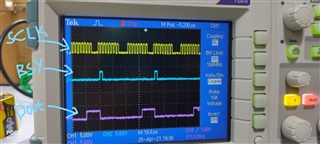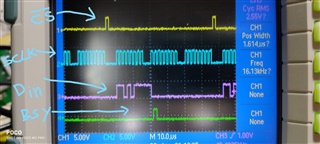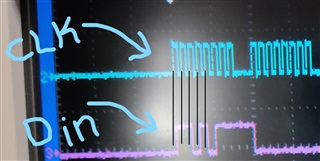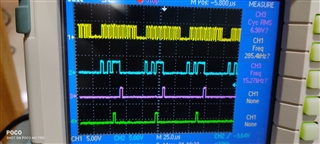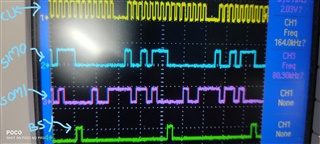Other Parts Discussed in Thread: TMS320F28379D,
Dear sir/madam,
im trying to interface tms320f28379d with ads7841 via spi but getting random junk with or w/o connecting voltage to selected channel through control byte .
check screenshots and correct me if im wrong.


